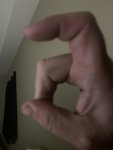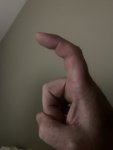Rifle Set up is a key element
It's the same as your car, consider a NASCAR Driver and the efforts to put them in a seat without moving. Think about the location of the seat. vs the steering wheel and pedals. Your rifle is very similar in that set up determines how efficient or how well you execute them.
When I instruct, I talk seats, mirrors and steering wheel. The fundamentals are supposed to be built in, execution should be on a subconscious level, it's the same place the mistakes take place too. Most don't know they are making them.
But if you can't reach the pedal, can't see out of the mirrors, and have to move too much to turn the wheel you are compomising the fundamentals because the brain now has to adapt to these changes or cheat them. A guy conserving energy after 500 laps will be in better shape on the final turn vs the guy who has been fighting the car the entire race. I want to move my eyes, not my head, I want my feet comfortable on the pedals, anything less creates stress, stress is bad.
A stock vs a Chassis is not a fundamental problem, but more adjustability means more comfort, more comfort means the brain is happy, willing to execute the fundamentals as needed, and will not resist. That is where body position comes into play, if your stock is too long and you are shooting a barricade, the stock will kick you off to the side trying to reach the scope, and that changes the recoil management which changes the impact. Me at 5'2" driving a rifle meant for a 6'2" guy is not gonna be correct. I might be able to execute the fundamentals to the best of my ability, but there will certainly be a trade-off in there.
Trigger control, two-stage vs single, maybe with the single-stage trigger they tap it, and not use follow-through, where the two-stage they follow through but crush the trigger. Two errors are seen in two different ways. Single-stage guys tap, 2 stage guys crush.
The 5 shot example maybe display is not the best, I can take a rifle completely set up for someone else, do great with it under limited use. Take that same rifle and make me shoot it during a 2 day match my scores will certainly suffer.
I want to be one with the rifle, as Tom Cruise taught me in Last Samurai, No Mind. Worry about the fight, worry about the crowd, worry about the sword, no mind, no worry, execute. Tell your brain this feels wrong and your brain won't stop reminding you.
It's why I laugh with levels, guys set them up wrong, use them the wrong way. They have everything working against them without knowing this is happening. Their process is, Get behind the rifle, align the reticle to target and then look at the level, it's off so they straighten it out. Then they go through their mental checklist and their brain stops looking at the level, it's already been corrected. So shot 1 is good, shot 2 they pull the rifle over, a little, not enough to perceive it in the scope so they shoot with it off. Shot 3 pull it over more and shoot again, now they see they are off level and fix it, so Shot 4 is good. Finally Shot 5 is slightly off. They have 3 different positions on the rifle vs one. Or worse they have to stop and fix it every shot because things are really bad.
Shooting a Cause and Effect endeavor, IF you do THIS, the Rifle will DO that, pretty simple. It's a dumb machine, left to its own devices it will do the same thing everytime. We are the wildcard, us and our Brain.



